#shergottite
Text
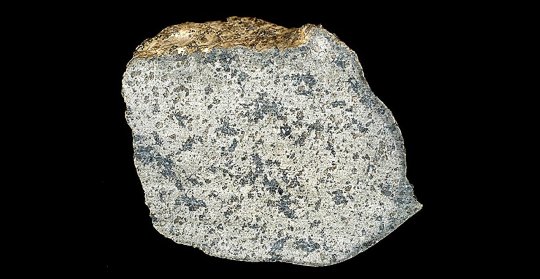
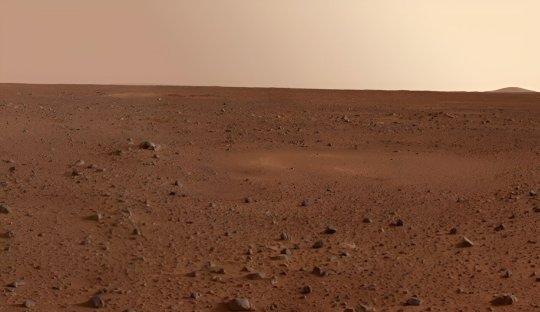
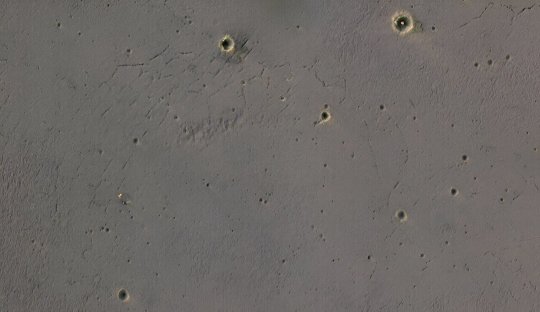
Most Martian meteorites are curiously young in age
Earth is occasionally hit by little pieces of Mars. These bits of Martian rock are incredibly rare, but can tell us a lot about the geological history of the red planet. One of the biggest issues for scientists studying these meteorites, however, has been a difficulty in dating them. Different techniques have come back with different ages, making it hard for researchers to pin down where on Mars the rocks originated.
But a new paper published in Earth and Planetary Science Letters has solved this problem. Putting Martian meteorites in a nuclear reactor has confirmed their curiously young age. Most meteorites from Mars are just a few hundred million years old, and likely come from relatively recent volcanic events such as the eruptions on the largest volcano in the solar system, Olympus Mons.
Dr. Ben Cohen, a volcanologist at the University of Glasgow, has been working with colleagues at the Natural History Museum, the University of Edinburgh, and researchers in the U.S. to figure out once and for all how old Martian meteorites actually are.
"We know from certain chemical characteristics that these meteorites are definitely from Mars," explains Ben. "They've been blasted off the red planet by massive impact events, forming large craters. But there are tens of thousands of impact craters on Mars, so we don't know exactly where on the planet the meteorites are from. One of the best clues you can use to determine their source crater is the samples' age."
The Shergottite Age Paradox
While more than 70,000 meteorites have been identified on Earth, only roughly 358 of these are thought to have originated on Mars. Impact events kicked up Mars' surface rocks and threw them into space. These incredibly rare rocks then swirled around the solar system before crashing down onto Earth millions of years later.
Martian meteorites are typically grouped into three main categories, with a fourth for those currently "unclassified." Chassignites are the rarest of these rocks, with only two ever having been discovered. Next are the nakhlites, which formed about 1.3 billion years ago during volcanic eruptions on Mars. The most common type of meteorites are those known as shergottites.
Around three-quarters of all Martian meteorites are classed as shergottites. They are also thought to have formed in roiling lavas of Martian volcanoes but have formed something of a conundrum for scientists studying the red planet too.
This is because most of Mars' surface is extraordinarily old. Using the abundance of impact craters, researchers know that the majority of the planet's surface is between three and four billion years old. But when scientists came to age the shergottite meteorites, they got a huge range of ages, from four billion years old to less than 200 million years old.
This created a problem—if the surface of Mars is, on average, billions of years old, then how were shergottite meteorites coming back with ages of just a few hundred million years old? This mismatch became known as the Shergottite Age Paradox.
"One of the ideas was that impact events hitting Mars could be 'resetting' the methods that geologists use to determine the age of rocks," explains Ben. "That was used to say that the meteorites were actually four billion years old, and all the younger numbers were because the rocks were being either fully or partially reset by the heat and pressure of these impacts."
But as more and more meteorites were studied by different techniques, the bulk of the results obtained were curiously young, with evidence that the ages were not reset by impact. Clearly, something was not quite right.
How to date Mars
Martian meteorites have historically been dated using a range of methods, typically giving a spread of ages. One of these is what is known as the "argon–argon" method. In the simplest of terms, this measures the rate of decay of the isotope potassium-40 to argon-40. Potassium is an abundant element, making this method very versatile. It can be used to measure the age of a variety of rocks, from the eruption of Mount Vesuvius to the start of the solar system itself.
This is useful for rocks that have formed on Earth, as scientists are able to account for contamination of additional argon making its way into the rocks which might skew the age. But things are a little trickier for rocks that have been whizzing around in space for millions of years.
"There are five potential sources of argon that can be contained within shergottite meteorites," says Ben. "That compares to rocks on Earth, where there are only three."
"The fact that there're these two extra sources of argon in Martian samples is what's making the argon–argon system get complicated for the shergottites."
By going back and looking at the argon–argon method with modern equipment and technology, Ben and his colleagues were able to reassess seven Martian meteorites. This included sticking very small pieces of them into a research-only nuclear reactor to measure the argon concentrations as accurately as possible, and then seeing what ages they came back with.
By looking more precisely at the chemistry of the meteorites they were able to account for any argon the rocks gained while in space. They were also able to correct for how much contamination there had been from both the Martian and Earth atmosphere.
"Once we did that, the argon–argon ages came out as being young and matched perfectly with other methods, like Uranium-Lead," explains Ben.
Professor Caroline Smith is the Head of Collections at the Museum and co-author of the new paper. She says, "Exciting science like this using samples from the Natural History Museum's collections is helping unravel the history of the planets in our solar system."
"This work also links to our ongoing meteorite research program and our continued Mars research using meteorites and with space exploration missions such as Mars 2020 (Perseverance rover), Mars Science Laboratory (Curiosity rover) and ExoMars."
While this new research meant that the various dating methods now lined up, it still left the problem of the Shergottite Age Paradox.
The best explanation for this is that the frequent bombardment of Mars has created a layer of crumbly rock on the surface known as regolith. Over time, as there have been more and more impacts, this layer of regolith has accumulated, while at the same time fresh volcanic eruptions brought newer rocks to the surface. This meant that for every new impact, the likelihood of the older rock being kicked up and ejected into space was reduced.
"The older the sample, the thicker the regolith, and the thicker the regolith the harder it is to blast the underlying rock off the surface of Mars," explains Ben. "And that would explain why around three-quarters of the Martian meteorites are the 'young' shergottites, with comparatively fewer of the older types of Martian meteorites."
TOP IMAGE....The vast majority of meteorites from Mars are shergottites, but the difficulty in ageing these rocks created something of a paradox. Credit: The Trustees of the Natural History Museum, London
CENTRE IMAGE....The young age of the shergottite meteorites seemingly did not match with the typically ancient surface of Mars. Credit: NASA/JPL
LOWER IMAGE....Scientists use the number of impact craters on the surface of Mars to estimate the age of rocks. Credit: NASA/JPL-Caltech/Univ. of Arizona
5 notes
·
View notes
Photo
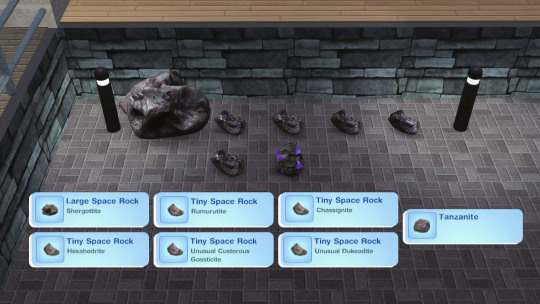

New rock haul:
Shergottite
Hexahedrite
Rumuritie
Unusual Custerous Gossticite
Chassignite
Unusual Dukedite
Tanzanite
7 notes
·
View notes
Text
The Mysterious Origins of Martian Meteorites
In August 1865, a 10-pound rock fell from space to Earth, landing with a bang in the remote village of Sherghati, India. After being recovered by witnesses to the event, the stone passed into the possession of a local British magistrate who endeavored to identify the source of the strange object. After more than a century of studying the meteorite fragments—so-called shergottites—researchers in…
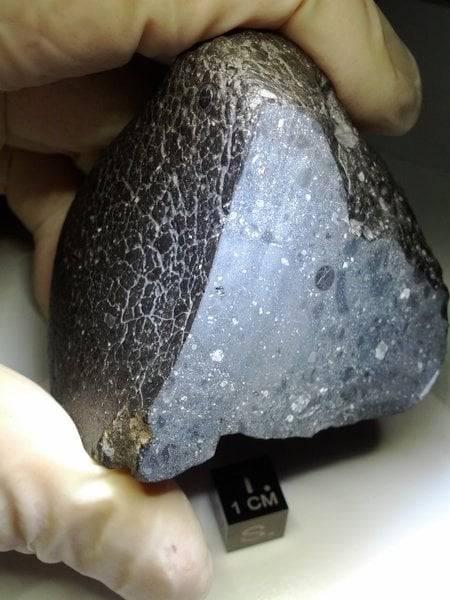
View On WordPress
0 notes
Text
Gran parte dell’acqua dell'oceano globale di Marte proveniva dai meteoriti
Gran parte dell’acqua dell’oceano globale di Marte proveniva dai meteoriti
Un esempio di meteorite shergottite, che è una roccia vulcanica del mantello marziano eruttata sulla superficie del pianeta.
Un team di ricercatori del Center for Star and Planet Formation dell’Università di Copenaghen, in collaborazione con i colleghi dell’Université de Paris, dell’ETH di Zurigo e dell’Università di Berna, ha trovato prove che la maggior parte dell’acqua che costituiva un…

View On WordPress
0 notes
Text


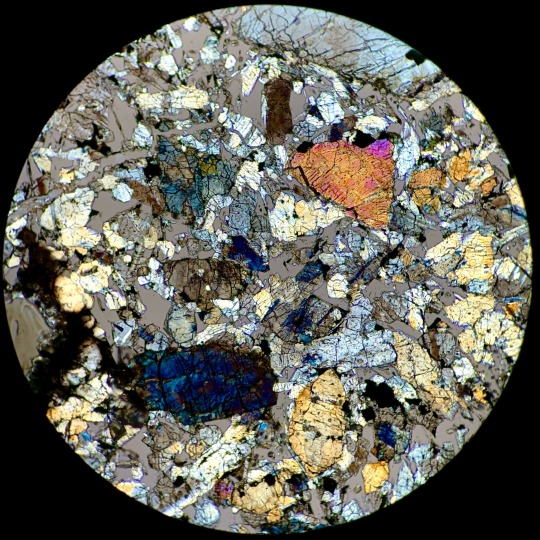

okay, but hear me out, martian rocks — shergottite edition.
to anyone who ever said rocks aren’t cool, you’re wrong.
#mars#petrology#mineralogy#geology#meteorite#thin section#thin section Thursday#science#space#shergottite#planetary science#i love em#a lot#myedit
96 notes
·
View notes
Photo

NWA 1950 Meteorite Thin Section
Recommended print size at 300 ppi = 165.55 x 100.69 inches
#meteorite#achondrite#mars#martian#shergottite#Photomicrography#photomicroscopy#nikonphotography#nikon d810#petrology#geology
1 note
·
View note
Text
NEW PAPER ALERT
My latest paper is now online in Meteoritics and Planetary Science.
Olivine-phyric shergottites represent primitive Martian magmas, but they commonly contain excess olivine and rarely represent primary mantle melts. Olivine chemistry, however, tracks magma evolution and preserves information on the original parent magma composition. Here, we investigate the applicability of the Al-in-olivine thermometer in tandem with olivine chemistry in a suite of 13 olivine-phyric shergottites to constrain the compositions and conditions of their mantle sources and parental magmas. We show that the Al-in-olivine thermometer is a robust method for constraining crystallization temperatures in shergottites, yielding temperatures in agreement with experimental work. In contrast, we do not recommend olivine–spinel thermometry relying on Mg-Fe in olivine, which underestimates crystallization temperatures by 160–380 °C. Olivine chemistry reveals distinct differences in Ni concentrations between shergottite groups, with enriched shergottites generally having higher Ni at a given forsterite (Fo) content. Nickel variations in terrestrial olivine are often accredited to contributions from a pyroxenite source; however, the same mechanism is not responsible for Ni variations in Martian olivine. Here, we favor a model for variable olivine modal abundance, caused by multiple melting episodes in the depleted mantle source, affecting Ni partitioning during melting to account for the Ni variations observed. In addition, we show that olivine Ni-Mn variations in depleted shergottites indicate variable petrogenetic histories and parental magmas. Tissint contains elevated Ni in olivine more similar to the enriched shergottites whereas DaG 1037 has elevated Mn in olivine suggesting an Mn-enriched parent magma relative to other depleted shergottites.
Click here for the full paper: https://doi.org/10.1111/maps.13721
0 notes
Photo
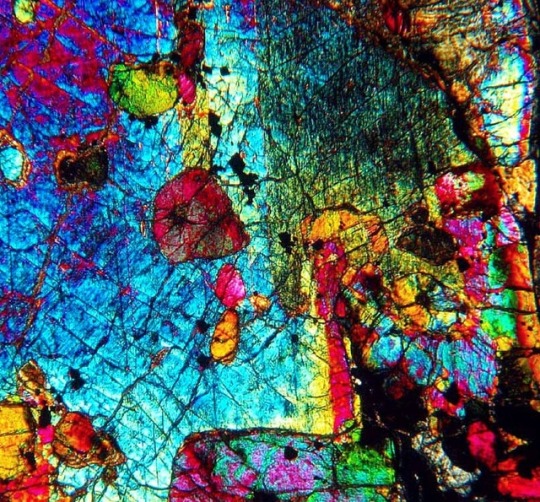
NWA 1950, Martian shergottite meteorite. Thin section viewed in cross-polarized light. Genuine rocks from space for collectors and science at Galactic Stone & Ironworks -www.galactic-stone.com - #meteorite
2 notes
·
View notes
Text
Martian Meteorite
Rare sample, Achondrite, Martian Meteorite, Shergottite, Price is per gramm $222 Contact >> what'sapp Meteor shower fragment Black distinct fusion crust Composition martian meteorite, Main components Pyroxene, Plagioclase Maskelynite, Olivine *Large assortment achondrites, lunar, asteroid and martian meteorites, Rare samples, prices are inexpensive Only some samples are presented on the site *Good buyer good discount, The more you buy, the lower the price See my other suggestions *The best choice of achondritis in the south of Russia
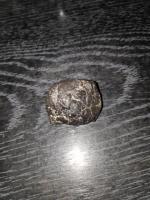
https://gidra.eu/prodam-v-evrope/v-roznitsu/martian-meteorite_i3712
0 notes
Text
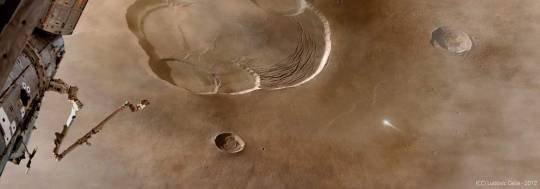
Olympus Mons is a very large shield volcano on the planet Mars. The volcano has a height of nearly 22 km (13.6 mi or 72,000 ft) as measured by the Mars Orbiter Laser Altimeter (MOLA). Olympus Mons is about two and a half times Mount Everest's height above sea level. It is the largest volcano, the tallest planetary mountain, and the second tallest mountain currently discovered in the Solar System, comparable to Rheasilvia on Vesta. In terms of surface area, Olympus Mons is the second-largest volcano in the solar system, second only to Earth's Tamu Massif. Olympus Mons is the youngest of the large volcanoes on Mars, having formed during Mars's Hesperian Period. It had been known to astronomers since the late 19th century as the albedo feature Nix Olympica (Latin for "Olympic Snow"). Its mountainous nature was suspected well before space probes confirmed its identity as a mountain.
The volcano is located in Mars's western hemisphere at approximately 18.65°N 226.2°E, just off the northwestern edge of the Tharsis bulge. The western portion of the volcano lies in the Amazonis quadrangle (MC-8) and the central and eastern portions in the adjoining Tharsis quadrangle (MC-9).
Two impact craters on Olympus Mons have been assigned provisional names by the International Astronomical Union. They are the 15.6 km (9.7 mi)-diameter Karzok crater (18°25′N 131°55′W) and the 10.4 km (6.5 mi)-diameter Pangboche crater (17°10′N 133°35′W) .The craters are notable for being two of several suspected source areas for shergottites, the most abundant class of Martian meteorites
0 notes
Photo

Martian meteorites for sale!! NWA 7397 is a Martian meteorite recovered near Smara, Morocco in early 2012! Martian meteorites are rocks ejected into space by asteroid impacts on Mars that possessed enough force to blast debris offworld. Some of this debris was captured by the gravitational pull of the Earth. It was found by a Moroccan meteorite hunter and was later scientifically determined to be Martian Shergottite. This Martian material was cut into smaller pieces and the specimens we have available are fragments from that process. They are in a 1-1/8" diameter protective gem jar for easy display. They can be shipped worldwide! We are asking $60CAD (~45USD) per gem jar. They come with a lifetime guarantee of authenticity and you can buy them now on www.SkullStore.ca or in-store Friday-Sunday (12-6pm) at 1193 Weston Rd, Toronto. We have a limited quantity of this material.
#meteorite#meteorites#geology#mars#martian#the martian#space exploration#astronomy#minerals#crystals#new age#pagan#occult#wicca#wiccan#skullstore
7 notes
·
View notes
Photo


Pressure required to launch a rock from Mars into space much lower than thought, discovers study In August 1865, a 10-pound rock fell from space to Earth, landing with a bang in the remote village of Sherghati, India. After being recovered by witnesses to the event, the stone passed into the possession of a local British magistrate who endeavored to identify the source of the strange object. After more than a century of studying the meteorite fragments—so-called shergottites—researchers in the 1980s finally determined its alien origins: our neighboring planet, Mars. Until humans are able to bring back samples from Mars, the only pieces of the Red Planet found on Earth are Martian meteorites such as the shergottites. The journey for these little Martian travelers has been violent: for Mars rocks to get to Earth, they must have been ejected from the Red Planet's surface with enough force to escape Martian gravity. This ejection was likely due to a large impact on Mars. The rocks withstood the massive temperatures and pressures of this impact and flew through the vacuum of space, eventually crash-landing on our own planet. For decades, scientists have worked on modeling the kind of Martian impact events that send bits of the Red Planet to Earth. Now, researchers at Caltech and the Jet Propulsion Laboratory (JPL), which Caltech manages for NASA, have conducted experiments to simulate the so-called "shock pressure" experienced by Martian rocks. They have found that the pressure required to launch a rock from Mars into space is much lower than originally thought. The research was conducted in the laboratory of Paul Asimow, the Eleanor and John R. McMillan Professor of Geology and Geochemistry. The study is described in a paper appearing in the journal Science Advances on May 3 and is a collaboration with JPL. In the new study, led by Caltech staff scientist Jinping Hu, the team conducted experiments to smash plagioclase-containing rocks from Earth and observe how the mineral transforms under pressure. The team developed a more accurate method to simulate Martian impacts in shock-recovery experiments, utilizing a powerful "gun" to blast rocks with projectiles traveling over five times the speed of sound. Previous shock-pressure experiments required reverberating shock waves through a steel chamber, which gives an inaccurate picture of what happens during an impact event on Mars. "We're not on Mars, so we can't watch a meteorite strike in person," says Yang Liu, a planetary scientist at JPL and a co-author on the study. "But we can recreate a similar kind of impact in a lab setting. By doing so, we found it takes much less pressure to launch a Mars meteorite than we thought." Previous experiments had shown that plagioclase turns into maskelynite at a shock pressure of 30 gigapascals (GPa), which is 300,000 times the atmospheric pressure one experiences at sea level, or 1,000 times the pressure a submersible comes into contact with while diving beneath 3 kilometers of ocean water. This new study shows that the transition actually happens at around 20 GPa—a significant difference from previous experiments. In particular, the new pressure threshold is consistent with evidence from other high-pressure minerals in these meteorites indicating that their shock pressures must have been less than 30 GPa. Nine out of the 10 high-pressure minerals found in Martian meteorites were discovered at Caltech in studies led by mineralogist Chi Ma, Caltech's director of analytical facilities, and a co-author of the study. "It has been a significant challenge to model an impact that can launch intact rocks from Mars while shocking them to 30 GPa," Asimow says. "In this context, the difference between 30 GPa and 20 GPa is significant. The more accurately we can characterize the shock pressures experienced by a meteorite, the more likely it becomes that we can identify the impact crater on Mars from which it originated." TOP IMAGE....A Martian meteorite, designated Northwest Africa (NWA) 7034 and nicknamed "Black Beauty," weighing approximately 11 ounces. Caltech researchers have now discovered that the shock pressure necessary to launch rocks from Mars' surface is less than previously believed. This meteorite itself was not used in the new study. Credit: NASA LOWER IMAGE....Two impact-cratered target assemblies. The overall chamber is made of stainless steel. Rock samples are placed in the center of the chamber. The black stains are from decomposed plastic sabot and O-rings of the projectile. Credit: Jinping Hu
3 notes
·
View notes
Photo

#mars #rock #meteor #shergottites #ontariosciencecentre (at Ontario Science Centre)
0 notes
Photo

The shergottites are as old as we thought they were!
This photo is a very tiny piece of Mars, viewed in a number of different ways. It is a grain of a mineral called baddeleyite, taken at high magnification using electron microscope techniques. Note the scale bar – 5 μm is about 1/5 to 1/10 the thickness of a human hair. This mineral deserves a special highlight today because this tiny grain, and a few others from the same rock, have settled a major ongoing debate regarding the martian meteorites.
The most abundant type of martian meteorite is a type called a shergottite. They make up more than ¾ of the martian meteorites available on Earth today, and, although there are some chemical differences, they look like normal igneous rocks that you’d find on Earth. They’re a rock type called basalt, and they look like they could have come out of a volcano on Hawaii or Iceland; islands almost totally made of basalt.
The shergottites were the first meteorites recognized to come from Mars. When scientists realize they’re holding a rock as unique as these, one of the first things they do is age-date the rock by measuring the abundances of radioactive elements and the products of radioactive decay.
There are a bunch of different radioactive elements that can be used to date a rock, including Potassium, Samarium, Lutetium, Rubidium, etc. When researchers measured the ages of the shergottites using those elements, they kept getting ages under 500 million years, sometimes as young as 100 million years old.
For Mars, those ages really are fascinating. Mars is much smaller than Earth and might have cooled off faster. Igneous rocks 100 million years old or younger means that the volcanoes on Mars have been active recently and may still erupt today.
There is, however, one problem with those ages. Every rock that has come to Earth from Mars has been blasted off the planet in a large impact. The energy released in that impact can disrupt and melt the rocks, and consequently the dates for the meteorites have large errors in them. Oftentimes, the different isotope clocks disagree by more than 100 million years.
And, there was one really big problem. The Uranium-Lead decay system is the most commonly used dating system for rocks in the solar system, but when used on martian rocks, that system gave ages over 4 billion years old. The U-Pb system disagrees with every other clock we have.
There are some reasons to believe the U-Pb system could be the one messed up. The other clocks work on rocks from the Moon, so we know they aren’t always disturbed by impacts. Also, the U-Pb system was being used on whole rocks rather than single minerals, and whole rocks can be contaminated by the environment. If lead was able to move around in surface waters on Mars, as does happen on Earth, it could have contaminated these rocks and just made any U-Pb age meaningless. But, even with that caveat, many researchers believed the shergottites must be over 4 billion years old based on the lead ages.
What would be really nice is to find a mineral with enough uranium and lead to date, since single minerals are much harder to contaminate than whole rocks. On Earth, the favorite mineral is zircon, which takes uranium into it, but there aren’t big zircons in these meteorites.
That leads to baddeleyite, which has the molecular formula ZrO2. Uranium substitutes for zirconium in this mineral, so it could work. Until recently, grains needed to be large to date, but recent work at UCLA has finally developed techniques to date grains this size.
Working with the labs at UCLA, a team of researchers led by the University of Western Ontario found these tiny baddeleyite grains in a martian meteorite from Africa (NWA 5298 is the official name) and, based on zoning that shows up in image box B, verified that the baddeleyites actually grew from a magma; the lines you see in image B wouldn't be preserved if it grew after the impact. But, there are tiny zircon layers on the edges of the baddeleyite, and those zircons were grown in the impact (they have perfect structure, demonstrated by the pattern in image D, which shows sharp bands indicating that the zircon has a normal structure and grew after the impact).
When the researchers dated the baddeleyites using the U-Pb system, they found that they were 187 million years old, exactly as old as we thought the shergottites were. Even cooler, they dated the zircon rims and found that they grew about 22 million years ago; possibly giving the date this rock was launched from Mars.
Finally we have a uranium-lead age for Mars that agrees with every other age we have for Mars. This is great, it means we actually know what we’re talking about! Also, it means the volcanoes on Mars have been active recently, within the last 100 million years, and the mantle of Mars is still active as well. A cooling mantle and active volcanoes can supply heat to the planet’s crust, and if there ever was life on Mars, could supply raw materials and heat that could even keep it going deep underground.
This is really important research about these rocks, if for no other reason than it confirms that we know what we’re talking about; the shergottites are as young as we thought they were, and that is just one more reason that Mars is a very interesting place.
-JBB
Press report: http://www.sciencedaily.com/releases/2013/07/130724200607.htm
Original paper and Image Credit, shared here for non-commercial purposes as permitted in Nature website use rules: http://www.nature.com/nature/journal/v499/n7459/full/nature12341.html
How do we know these rocks are from Mars? TU Post: https://www.facebook.com/photo.php?fbid=497017653696745&set=a.433415610056950.106382.334816523250193&type=1&relevant_count=1
#Science#Mars#Geology#Mineral#Crystal#Zircon#baddeleyite#Age#Uranium#Lead#Date#Meteorite#The earth story#The real universe
65 notes
·
View notes
Text
Mars’ta 2 milyar yıl önce volkanik faaliyet olduğuna dair kanıtlara ulaşıldı http://ift.tt/2kmDHDu
Afrika’da 2012 yılında keşfedilen “Kuzeybatı Afrika 7635” adlı gök taşını inceleyen bilim adamları, Mars’ta en az 2 milyar yıl önce volkanik aktiviteler olduğuna ilişkin kanıtlar elde etti.
Afrika’da 2012 yılında keşfedilen “Kuzeybatı Afrika 7635” adlı gök taşını inceleyen bilim adamları, Mars’ta en az 2 milyar yıl önce volkanik aktiviteler olduğuna ilişkin kanıtlar elde etti.
Sonuçları, “Science Advances” dergisinde yayımlanan çalışmada, Houston Üniversitesinden araştırmacılar, Mars’tan geldiği belirlenen gök taşının incelenmesi sonucunda, Kızıl Gezegen‘in güneş sistemindeki en uzun ömürlü volkanlardan bazılarına ev sahipliği yaptığının doğrulandığını belirtti.
Araştırma ekibinin lideri Tom Lapen, bulguların, gezegenin nasıl oluştuğuna ve Mars üzerindeki volkanik faaliyetlerin iç yüzüne ilişkin ipucu verdiğini söyledi.
Çalışmada, Lapen ve ekibi tarafından analiz edilen meteorun 2,4 milyar yıl önce ve güneş sistemindeki en uzun ömürlü volkanik merkezlerin birinden kopup geldiği ileri sürüldü.
“Kuzeybatı Afrika 7635” gök taşının, “Shergottite” adı verilen bir çeşit volkanik kaya türü olduğu tespit edilmişti.
Mars’taki bilgilerin çoğu Dünya’daki meteorlardan öğreniliyor
Mars’taki volkan kayalarının bileşimi hakkında bilgilerin çoğu Dünya’da bulunan meteorlardan öğreniliyor.
Mars’ın en büyük volkanı olan Olympus Mons’un, yaklaşık 27 kilometre yüksekliğinde olduğu tespit edilmişti.
Bir milyon yıl önce bilinmeyen bir cisim, Mars’ın yüzeyindeki yanardağ veya lav ovalarına çarparak kayaları uzaya fırlatmış, bu kayaların parçaları Dünya’nın yörüngesine girmiş ve meteor olarak düşmüştü.
Bu gök taşları Mars’taki konum hakkında bilgi sağlamış ve daha önce incelenen gök taşları, 327 milyon ila 600 milyon yıllık olduğu bildirilmişti.
Kaynak:AA
from Aeroportist I Güncel Havacılık Haberleri http://ift.tt/2k3gR86
via IFTTT
0 notes
Text
SIDE BLOG ALERT!!! If you like science (namely geology and outer space) follow my new side-blog @shergottites! There’ll be loads of science fun and you can see what I’m up to during my PhD.
4 notes
·
View notes